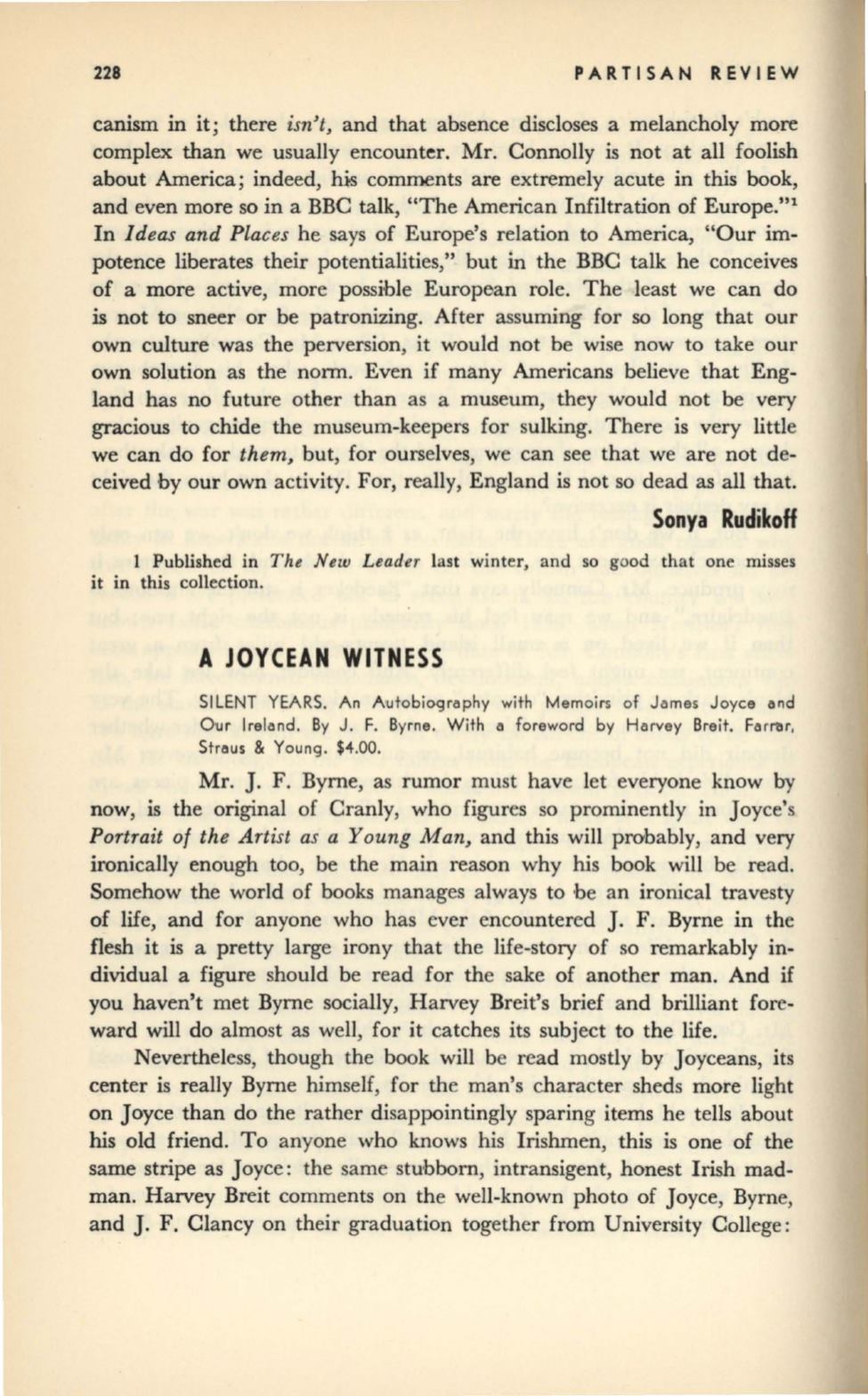
228
PARTISAN REVIEW
canism in it; there
isn't,
and that absence discloses a melancholy more
complex than we usually encounter. Mr. Connolly is not at all foolish
about America; indeed, his comments are extremely acute in this book,
and even more so in a BBC talk, "The American Infiltration of Europe."i
In
Ideas and Places
he says of Europe's relation to America, "Our im–
potence liberates their potentialities," but in the BBC talk he conceives
of a more active, more possible European role. The least we can do
is not to sneer or be patronizing. After assuming for so long that our
own culture was the perversion, it would not be wise now to take our
own solution as the norm. Even if many Americans believe that Eng–
land has no future other than as a museum, they would not be very
gracious to chide the museum-keepers for sulking. There is very little
we can do for
them,
but, for ourselves, we can see that we are not de–
ceived by our own activity. For, really, England is not so dead as all that.
Sonya Rudikoff
1 Published in
The New Leader
last winter, and so good that one misses
it in this collection.
A JOYCEAN WITNESS
SILENT YEARS. An Autobiography with Memoirs of James Joyce lind
Our Ireland. By J . F. Byrne. With
II
foreword by Hllrvey Breit. Fllrr'llr,
Strllus
&
Young. H.OO.
Mr.
J.
F. Byrne, as rumor must have let everyone know by
now, is the original of Cranly, who figures so prominently in Joyce's
Portrait of the Artist as a Young Man,
and this will probably, and very
ironically enough too, be the main reason why his book will be read.
Somehow the world of books manages always to be an ironical travesty
of life, and for anyone who has ever encountered
J.
F. Byrne in the
flesh it is a pretty large irony that the life-story of so remarkably in–
dividual a figure should be read for the sake of another man. And if
you haven't met Byrne socially, Harvey Breit's brief and brilliant fore–
ward will do almost as well, for it catches its subject to the life.
Nevertheless, though the book will be read mostly by Joyceans, its
center is really Byrne himself, for the man's character sheds more light
on Joyce than do the rather disappointingly sparing items he tells about
his old friend. To anyone who knows his Irishmen, this is one of the
same stripe as Joyce: the same stubborn, intransigent, honest Irish mad–
man. Harvey Breit comments on the well-known photo of Joyce, Byrne,
and J. F. Clancy on their graduation together from University College:


